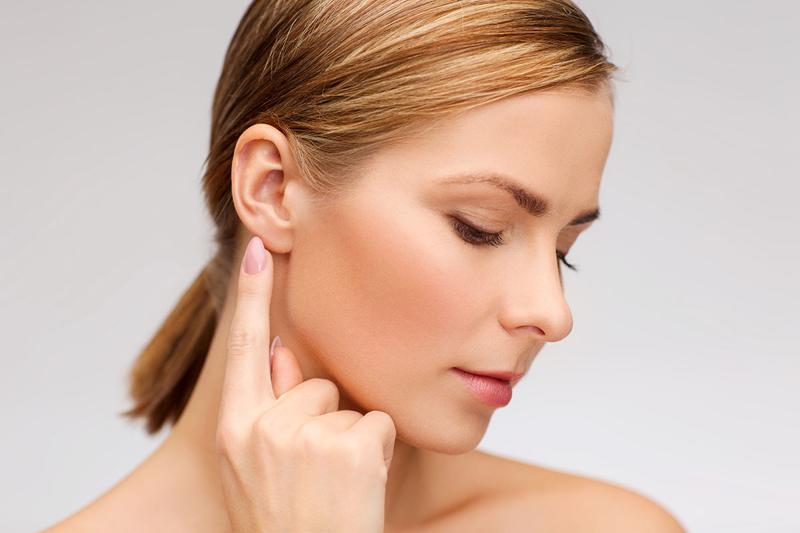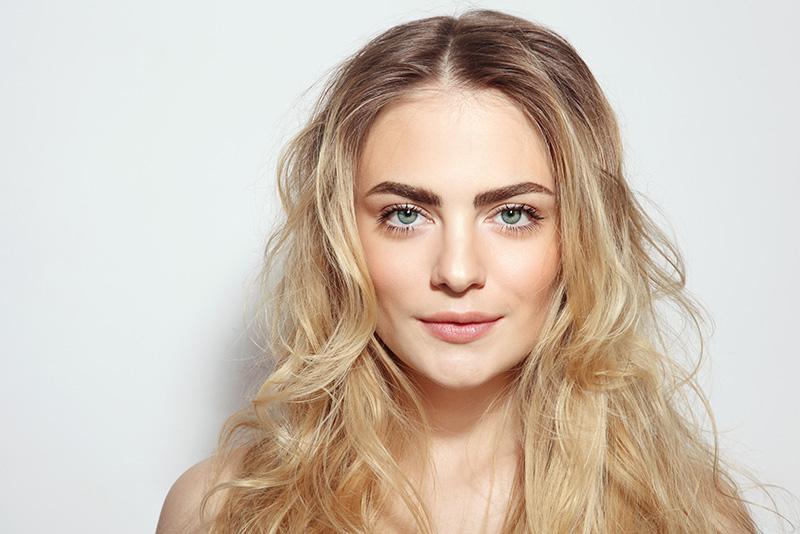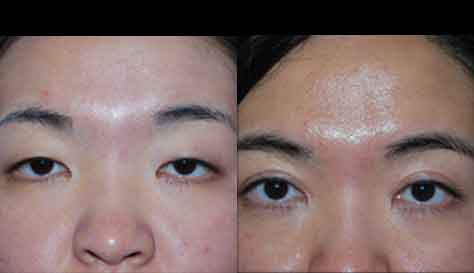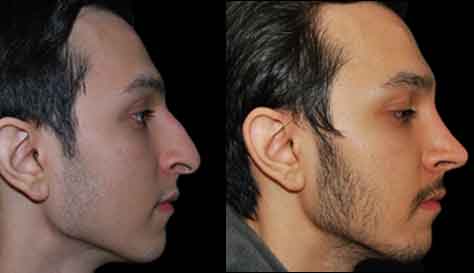Liquid Facelift
Conveniently located to serve the areas of New Jersey and New York

A liquid facelift is a nonsurgical treatment that restores volume and a more youthful appearance to the face with injectables instead of surgical techniques. Unlike a traditional facelift, a liquid facelift can reduce signs of facial aging without incisions, scarring, or the downtime associated with anesthesia. At Plastic Surgery of Short Hills, we have helped many patients enhance their appearance with customizable treatments designed to reduce signs of facial aging.
Dr. Alexander Ovchinsky is a facial plastic surgeon well-known for his transformative facial rejuvenation procedures. He is also a fellow of the American Academy of Facial Plastic & Reconstructive Surgery, and his innovative techniques have helped many patients restore their self-confidence.
Contact our office to learn more about how a liquid facelift can enhance your appearance:
Contents
About Liquid Facelifts
Droopy jowls, fine lines, and wrinkles can impact your appearance as you age. Signs of aging are especially noticeable in the midface, where the cheeks lose volume and nasolabial folds begin to appear beside the nose and mouth. UV exposure and lifestyle habits such as smoking can also accelerate signs of facial aging. (1) A liquid facelift can effectively restore volume to the midface with different fillers designed to target deep layers within the skin. We can also administer neuromodulators such as Dysport or Xeomin, which are injectables that relax facial muscles to prevent fine lines and wrinkles from forming. Depending on your aesthetic goals, you can receive a combination of injectable treatments to enhance your appearance.
With a liquid facelift, we can:
- Restore lost volume in cheeks
- Define the cheekbones
- Sharpen the jawline
- Minimize the appearance of jowls
- Lift sagging brows
- Improve dark undereye circles
- Diminish fine lines and wrinkles
- Reduce neck banding
Nonsurgical Eyelid Lift
Many patients choose to combine a non-surgical eyelid lift with a liquid facelift. As you age, it is common to experience volume loss, sagging skin, and wrinkles beneath the eyes, creating a tired appearance. With fillers, Dr. Ovchinsky can restore volume to the delicate tissue beneath the eyes for a more alert and youthful appearance. During a nonsurgical eyelid lift, Dr. Ovchinsky will lift and reshape the brows, improve dark under-eye circles, and reduce fine lines around the eyes for a smoother appearance.
Liquid Facelift Treatments
Radiesse
Radiesse adds volume to the skin and rejuvenates the skin barrier with tiny microspheres (calcium hydroxylapatite) that increase collagen levels. The formula can diminish mild skin laxity, volume loss, fine lines, and more severe wrinkles. Improving collagen levels can also help you achieve a more radiant complexion.
Restylane® Lyft (Perlane)
Restylane is FDA-approved for treating fine lines and wrinkles. Its patented XpresHAn technology lifts the skin and provides structural support from within. The smooth hyaluronic-based formula distributes itself evenly beneath the skin barrier for a natural appearance. It is also flexible and moves fluidly with facial movements. Restylane® Lyft is a firm, flexible formula specifically designed to improve the volume in the cheeks and hands.
Xeomin
Xeomin is a neuromodulator that reduces repetitive muscle movements by targeting acetylcholine, a neurotransmitter that plays a role in muscle contractions. It is purified with XTRACT Technology™. The purified formula removes proteins that can cause skin irritation, making it an ideal formula for patients with sensitive skin. (2) Xeomin can help you achieve smoother skin without a stiff or unnatural appearance.
Dysport
Dysport works in a way that is similar to Xeomin, but it contains added proteins that provide a broader diffusion. Dysport tends to be more effective for larger treatment areas. It is also faster acting and can provide noticeable results sooner.
Belotero
Belotero is a dermal filler specifically formulated to address fine lines around the eyes and mouth. The formula can treat these delicate areas if you have smile lines, crow’s feet, or lines around the lips. The smooth formula is softer than other dermal fillers, making it a great option for smoothing out fine lines.
Sculptra
Sculptra is a dermal filler that contains poly-L-lactic acid (PLLA)–tiny microspheres that stimulate collagen production to renew your skin over time. With this filler, Dr. Ovchinsky can improve the appearance of sagging jowls, hollow cheeks, and volume loss near the temples. Since Sculptra increases your skin’s collagen levels, you can enjoy a smoother appearance with results that last up to a year.
Candidates
If you have loose, sagging skin, the appearance of jowls, deep fine lines, or a tired appearance, you are likely a good candidate for a liquid facelift. Suitable candidates typically have sagging skin, wrinkles, or volume loss affecting their complexion. If you are hoping to achieve a smoother, more youthful appearance, we can help you achieve natural-looking results with a liquid facelift.
Candidates should have realistic expectations and be in good overall health. If you are pregnant or breastfeeding, we may recommend that you wait to have a liquid facelift.
Consultation
During your consultation, Dr. Ovchinsky will examine your skin to determine the best treatment plan for you. The type of filler you need will depend on the location of your fine lines and wrinkles and whether you would like to also address sagging jowls or general volume loss.
Please come prepared with any questions you have. We can also recommend other treatments to enhance your appearance if you have additional goals.
See the blog for more about our facial rejuvenation treatments!
Preparation
Before a liquid facelift, you will need to stop taking medications and supplements that thin the blood. You will also need to stop smoking temporarily and avoid drinking alcohol before the procedure, as these activities can affect your blood circulation. You must avoid intense chemical peels or medspa treatments before your liquid facelift, and try to limit sun exposure to protect your skin from damage. If you use retinoids, you will need to cease use temporarily. Our team will recommend a skincare routine leading up to your procedure to help you optimize your results.
Procedure

On the day of your procedure, please arrive with a clean face without makeup or facial products. We will cleanse your skin, and Dr. Ovchinsky will administer the predetermined injectables to diminish fine lines and wrinkles and restore lost volume.
The type of fillers you receive will depend on your aesthetic goals. Dr. Ovchinsky prefers to use Radiesse, Perlane, Voluma, or Sculptra in the cheeks as these fillers tend to be denser and more supportive than other products. He can define the jawline and improve the appearance of sagging jowls with these especially volumizing fillers designed to support deep tissue.
Dr. Ovchinsky can administer Dysport® or Xeomin near the mouth and chin to prevent fine lines and wrinkles from forming or worsening during facial expressions. Dr. Ovchinsky can also soften thick bands on the front of the neck (platysmal bands) with neuromodulator injectables.
A liquid facelift typically takes less than an hour to complete. The treatment is carried out in our state-of-the-art office. Contact our office to learn more!
After Your Treatment
After your liquid facelift, you can enjoy smoother skin with fewer fine lines and wrinkles. Restoring the volume of your cheeks can help you achieve a more youthful look. In fact, many patients enjoy looking 5 to 10 years younger after receiving their treatment. With a liquid facelift, you can achieve results without long surgical scars or significant downtime. You can enjoy results for as long as 6 months to 2 years, depending on the type of fillers you receive. We can also schedule a touch-up appointment to enhance your results.
The Cost of a Liquid Facelift in New Jersey
The cost of your treatment will depend on your personalized plan. We can provide an all-inclusive quote during your consultation.
To learn more about pricing, contact our office in New Jersey or call (973) 379-0101!
FAQ
Is a liquid facelift painful?
We administer a topical anesthetic for comfort, depending on your treatment plan. Many fillers contain lidocaine for patient comfort.
Does a liquid facelift require anesthesia or surgery?
No, we can enhance your complexion without incisions or anesthesia, making the procedure an ideal option for patients with mild to moderate signs of facial aging.
How soon can you see the results of the liquid facelift?
Depending on the types of fillers you receive, you may enjoy an improvement in your complexion immediately after your appointment. However, certain fillers take time to take effect.
Is a surgical or nonsurgical facelift best for me?
We can examine your skin during your consultation to recommend the best treatment plan. If you have more severe signs of facial aging that cannot be fully addressed with fillers, we may recommend alternative procedures.
References
- Rohrich RJ, Sinno S, Vaca EE. Getting Better Results in Facelifting. Plastic and Reconstructive Surgery – Global Open. 2019;7(6):e2270. doi:https://doi.org/10.1097/gox.0000000000002270
- Frevert J. Xeomin®: an innovative new botulinum toxin type A. European Journal of Neurology. 2009;16:11-13. doi:https://doi.org/10.1111/j.1468-1331.2009.02879.x





